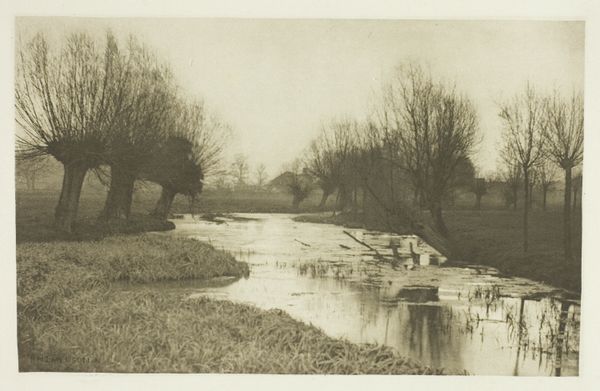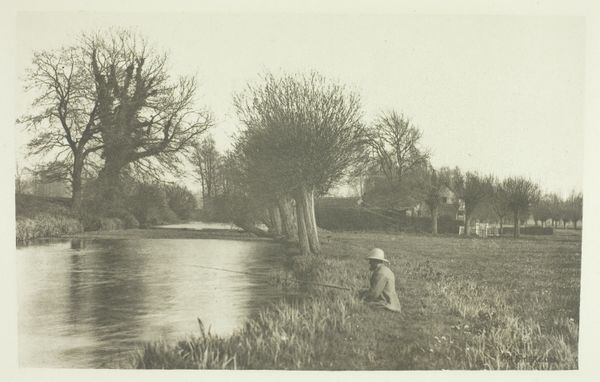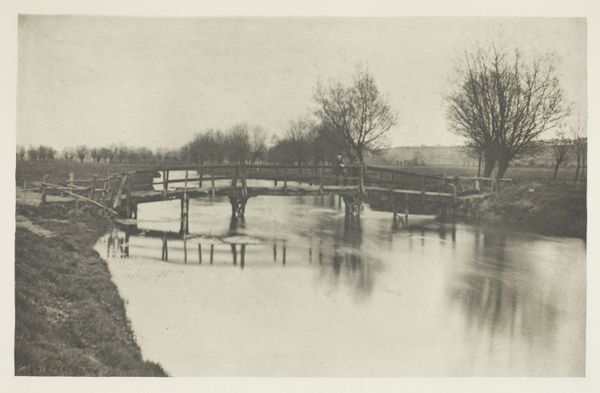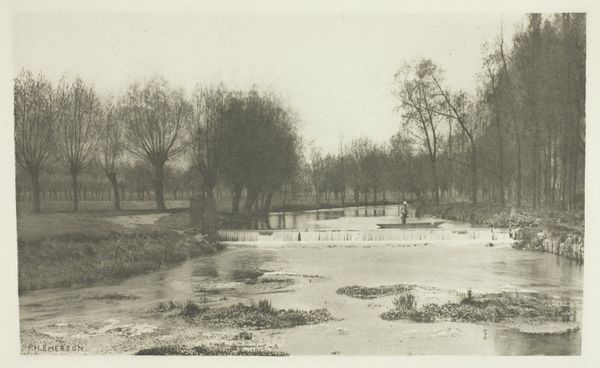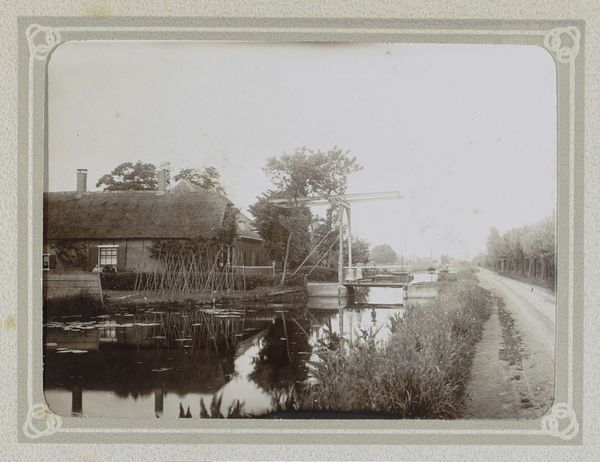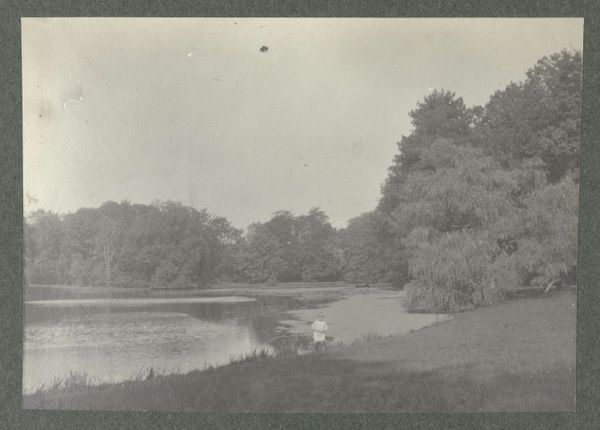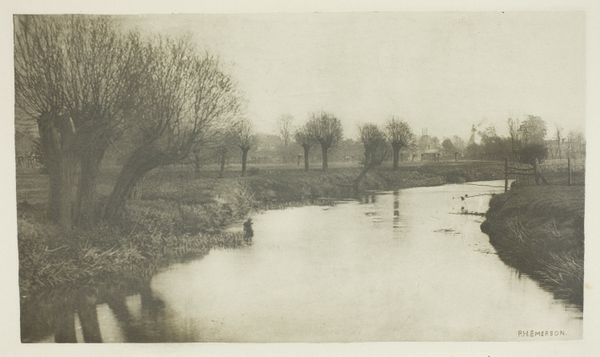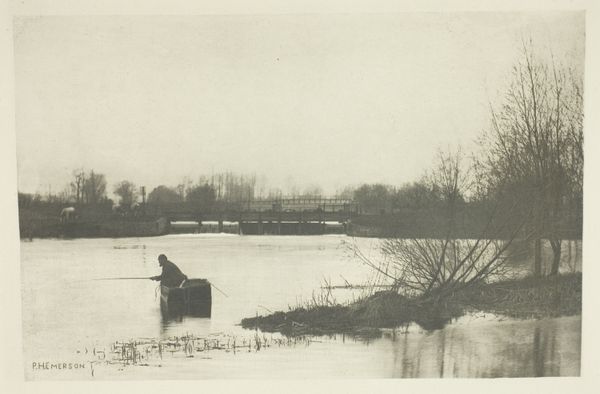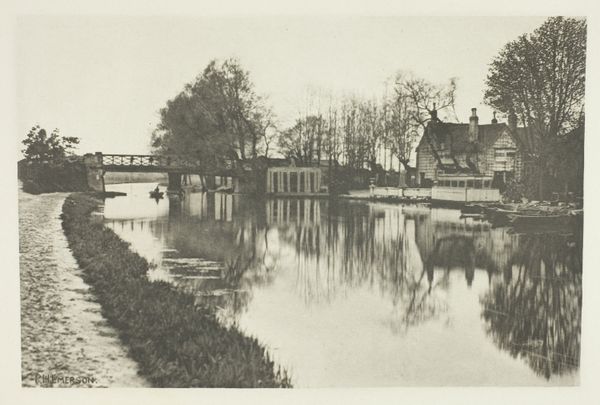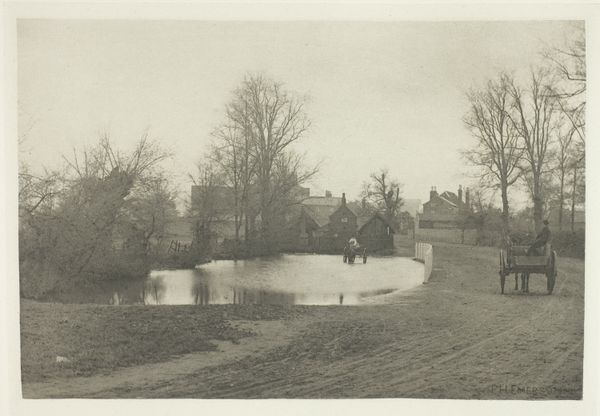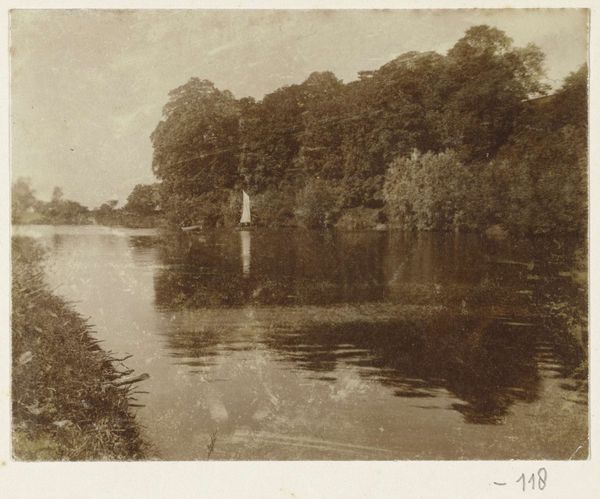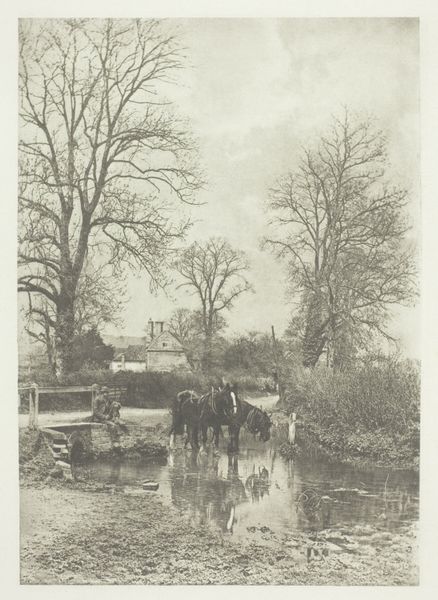
plein-air, paper, photography, glass, albumen-print
#
still-life-photography
#
16_19th-century
#
pictorialism
#
plein-air
#
landscape
#
paper
#
nature
#
photography
#
glass
#
albumen-print
Dimensions: 8.2 × 8.2 cm
Copyright: Public Domain
Curator: Looking at this photograph, "Kelmscott Manor: From the Thames," captured by Frederick H. Evans in 1896, I’m immediately struck by the scene’s serene quietude. It's an albumen print, and it's a fantastic example of pictorialism's embrace of artistic photography. Editor: There’s a certain stillness, yes, but also a kind of melancholy. The starkness of the trees, the slightly blurred reflection in the river...it evokes a sense of fading or loss. Curator: That sense of nostalgia feels very connected to the Arts and Crafts movement, which was thriving at the time. William Morris, a key figure in that movement, actually lived at Kelmscott Manor. Evans, influenced by Morris’s ideals, sought to capture the timeless beauty of the English countryside. His works moved against the rapid industrialization by presenting such picturesque architecture and landscapes. Editor: Absolutely. This image idealizes rural life, positioning it as a counterpoint to urban decay and the social upheavals brought on by industrial capitalism. It begs the question, though: for whom was this idyllic vision intended? Was it a call to preserve traditional ways of life, or perhaps a form of escapism available primarily to a privileged class? Curator: Well, Morris's vision for Arts and Crafts involved reintroducing beauty to everyday life, making it more accessible to everyone. Evans’s work, displayed in galleries and photographic journals, played a role in shaping popular perceptions of British heritage and culture, contributing to the aesthetic education of the public, not merely the elite. Editor: I appreciate that historical context, but even if unintentionally, doesn't this romanticized vision risk glossing over the realities of rural poverty and inequality at the time? I guess I can't help but think about whose stories get told, and whose are left out of these carefully curated depictions of the past. Curator: I agree that questioning whose narratives are dominant is vital, and considering it can allow for fuller art historical context. Editor: Well, this image certainly gives us food for thought about those past perspectives. Curator: It does, doesn't it? A peaceful window into a complex history.
Comments
No comments
Be the first to comment and join the conversation on the ultimate creative platform.
